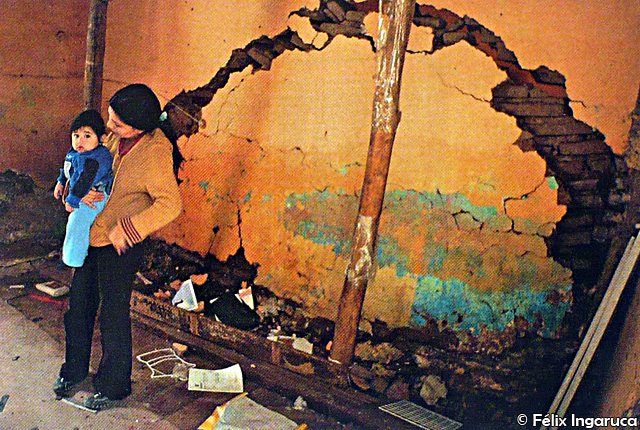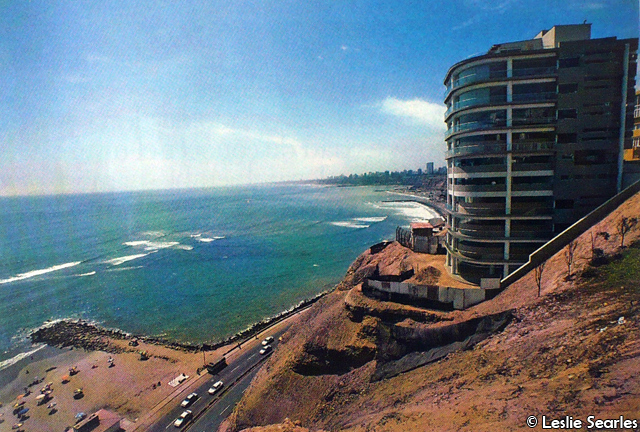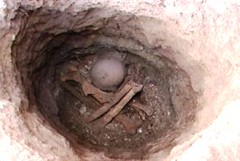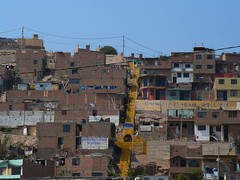Earthquake-proofing Peruvian cities
In the wake of the devastating earthquake in Chile, Peru’s government finally decided to implement measures to help prevent a future catastrophe, including tsunami early warning systems. But as Pamela Montes rightly states, the government should give special attention to the quality of housing, particularly in the over-populated and vulnerable capital Lima.
By Pamela Montes for El Comercio
 The terrible grade 8.8 has awoken a concern in Peru with the population more interested in the level of risk to their homes and the type of ground they are built on. While the government is only now concerning itself with satellite systems to detect tsunamis… there is an uncontrolled proliferation of buildings constructed without technical supervision, under laws designed to protect the “housing boom” but that ignore safety concerns, showing we have not learnt any lessons from the Pisco quake of 2007.
The terrible grade 8.8 has awoken a concern in Peru with the population more interested in the level of risk to their homes and the type of ground they are built on. While the government is only now concerning itself with satellite systems to detect tsunamis… there is an uncontrolled proliferation of buildings constructed without technical supervision, under laws designed to protect the “housing boom” but that ignore safety concerns, showing we have not learnt any lessons from the Pisco quake of 2007.
Two weeks ago Alan Garcia announced the start of a nation-wide program that will see “hundreds of engineers” analysing the most vulnerable areas where people live – areas that may face risks of landslides or are not on solid ground – and plan their relocation or re-enforcement.
After the earthquake in Pisco, the School of Engineers in Peru made available a team of specialists to conduct structural checks of homes and apartment buildings in the capital with the aim of determining their resistance in the event of a quake. But the cost of this service can leave it out of reach of most of the population. Although the School of Engineers doesn’t reveal their prices without first arranging a visit, those who have received the service state it costs around S/.700 or $250.

But can will pay this in the poorer areas of Lima?, not to mention the provinces. For this new government project, a government run approach, the government doesn’t appear to have contemplated this cost, or the general feasibility. At first glance the “hundreds” of engineers could never check all the constructions that should be checked. It also remains to be explained what funds the government will make available for this project, especially considering that in just the Cercado de Lima, the colonial centre of the city home to the government, some 1,300 buildings exist that, according to Civil Defence, are at risk of collapse in any earthquake greater than 8.0.
Vertical Growth
 Of the 9 million people in Lima, more than 60% live in a “informally built” homes. That’s to say, the home was built, whether with good material or not, without any professional input. The situation is observed in districts like Independencia, Comas, San Juan de Lurigancho or Carmen de la Legua, where despite having fairly stable ground to build on, the danger of do-it-your-self home construction is ever present.
Of the 9 million people in Lima, more than 60% live in a “informally built” homes. That’s to say, the home was built, whether with good material or not, without any professional input. The situation is observed in districts like Independencia, Comas, San Juan de Lurigancho or Carmen de la Legua, where despite having fairly stable ground to build on, the danger of do-it-your-self home construction is ever present.
According to Francisco Ríos, engineer from the Peruvian-Japanese Centre of Seismic Investigations and Disaster Mitigation:
“There are places in Lima where all indications are that homes are safe. In the middle and upper class districts there should not be heavy damage because the buildings are constructed with profession oversight”.
However, Ríos explains that it is important not only to build well but to take into account the type of ground soil built upon. Some zones are vulnerable due to high levels of marine deposits or from land gained by depositing rubble such as in Miraflores. In parts of Chorrillos and La Molina, some homes are built on what used to be swamp land.
In theory, well build apartments built on good ground should withstand up to a grade 9.0 earthquake. Many homes in Lima showed cracks after the 2007 earthquake but this is not cause for alarm and is only a natural result of the vibrations. Earthquake-proofed building tend to show these cracks on the walls, but should they appear on load-bearing columns or beams, it would be a good idea to have an expert look at them.
The new government-financed homes of the Mi Vivienda program for the working class are well built, with thick reinforced concrete walls with special beams located at strategic points such as in the centre of homes and stairs people may be using to escape at the time of a quake.
Witnesses to the swift vertical growth of Lima may be surprised when they see a construction site with thin 10cm floors and walls. But according to experts, it’s impossible to tell at simple sight whether a construction is safe or not, as even at these widths reinforced concrete can be extremely resistant. Those who live in these cheaper constructions do complain however about noise problems that sometimes cause arguments or embarrassment between neighbours.
Destructors Inc.
The housing boom in Lima and other Peruvian cities has also led to a boom in informal constructions and the embarrassment of a weak legal system unable to deal with the deficiencies deceived home owners complain about.

Some months ago, the controversial housing law 29090, which allows for the granting of automatic licences to builders of multi-family homes, started a conflict with the groups representing professional engineers and architects. They denounced the law as dangerous, passed only with the goal of increasing investment in construction and ignoring safety. The law was finally modified, but this hasn’t stopped new construction companies with little or no experience appearing and constructing homes with little or no professional input.
In September 2009, the dean of the Lima School of Engineers Fernán Muñoz Rodriguez declared that in the district of Miraflores some 500 licences were granted automatically. Of these, 60% show technical problems. Added to this, the CGTP workers union said that just last year 29 deaths were recorded on building sites in Lima because of a lack of adequate safety checks. During 2007, consumer protection agency Indecopi sanctioned 46 construction companies for not completing buildings as contracted, presenting them with defects, delivering builds late or never returning money paid by clients who pulled out of the purchase for any of these reasons.
The famous “earthquake prevention plan” announced by the government last week has to first consider a revision to laws and regulations that continue to allow the cities of this country to grow without order and without considering the consequences.
Tags: construction, earthquake, economy, housing boom





![Novalima in London [Featured]](http://farm3.static.flickr.com/2311/1508319950_4fede310ba_m.jpg)




